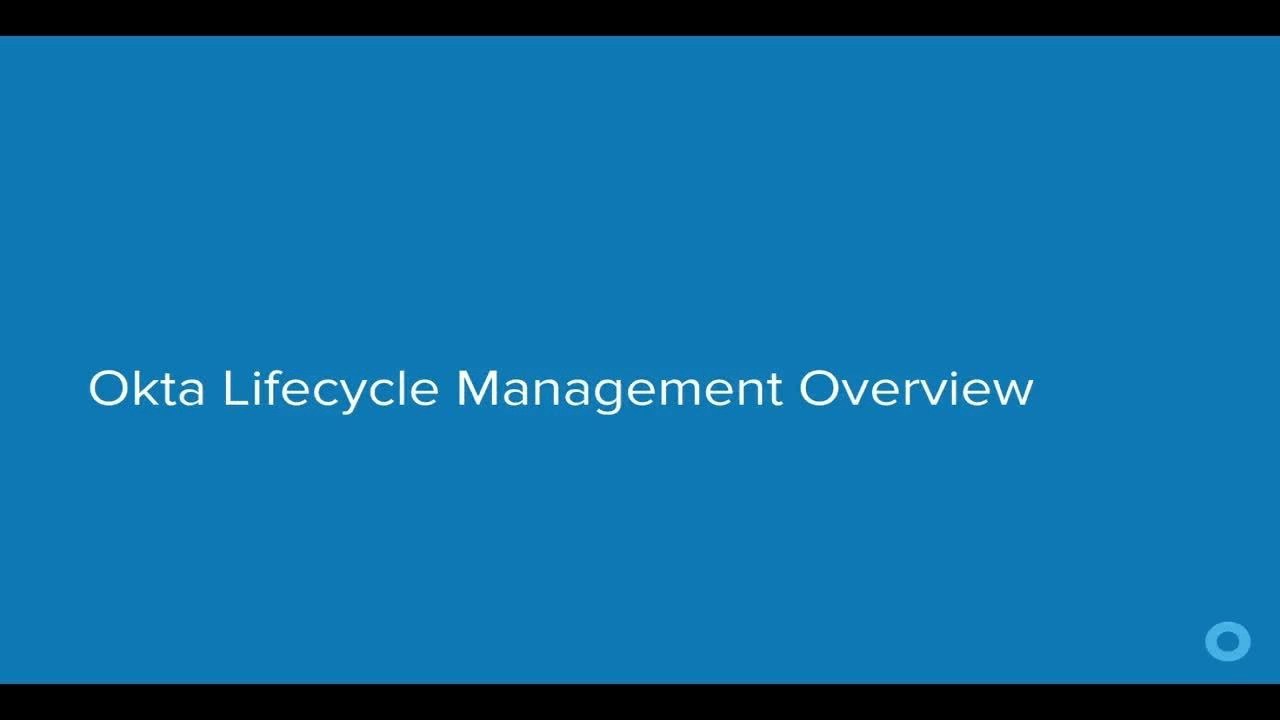Automated Provisioning and More: Why You Should Adopt Okta Lifecycle Management
Think about it: when you buy yourself a new laptop or smartphone, it doesn’t just start working as soon as you walk out of the store. You have to set up a profile, install software, and likely transfer data and applications from your previous device. And while that may take some time upfront, the result is a personalized device that makes your life easier.
The same thing goes when you purchase software for your organization. In order to stay up to date with evolving enterprise, digital, and cybersecurity trends, modern companies need to be equipped with a suite of best-of-breed technologies that set them up for success. In order to get the most out of these solutions, it’s important to ensure that they are effectively adopted across your organization.
At Okta, we know that software adoption can be complex—that’s why we’re here to help. Starting with Okta Lifecycle Management (OLM), we’re featuring the benefits of the products you already have in your toolkit, offering tips and resources for how to make their adoption as successful as possible.
Automated provisioning saves time, money, and headaches
As you know, provisioning and deprovisioning users is a massive—often manual—task for your HR and IT teams. Every new hire, role change, access permission, or company exit requires timely modifications to a user’s account. This applies to your whole extended enterprise of employees, contractors, vendors, and contingent workers—all of which require different access permissions. As a result, HR and IT spend inordinate amounts of time on these processes and are distracted from other priorities, and your end-users suffer delays in productivity if their accounts aren’t configured correctly.
As an OLM customer, you’ve already taken a first step towards easing the burden on your users. By automating all user lifecycle changes, it provides tangible benefits, saving your organization:
- 30 minutes per application provisioning request
- 30 minutes per user on setting up groups and entitlements
- $20 per user in annual audit preparations
Now, all those additional resources can be put towards mission-critical tasks that move your organization forward.
190+ workplace app integrations

Part of the hassle of provisioning users is that employees need access to a comprehensive suite of applications to do their job. That includes HR systems, payroll applications, communication channels, collaboration tools, and more. OLM solves this by integrating with more than 190 workplace apps on our Okta Integration Network, allowing you to automate account creation, updates, and deactivation across various applications. These automated processes ensure that new employees can start working on Day 1, and protects your systems by immediately deactivating terminated users.
Operating a hybrid IT environment? No problem
At Okta, we understand that a complete move to the cloud is not always possible. Most organizations still live with a mix of cloud and on-premises infrastructure. While the pre-built integrations in the Okta Integration Network primarily support cloud apps, OLM allows you to configure provisioning integrations for on-prem apps, ensuring you have the same provisioning experience across all of your applications. To support you in this endeavor, we’ve built knowledge resources and instructor-led training to help you provision each app the way you need.
Groups and automations make governing access more efficient
Beyond reducing the burden of manual provisioning, OLM’s group administration processes help your HR and IT teams manage access, application roles, and security policies for departments and other user groups. There are two features that enable you to manage access for multiple users at once:
- Group rules allow administrators to set policies that determine group membership, application permissions, automated provisioning, and more.
- Group push lets administrators push groups and their memberships to provisioned third-party apps.
You can also use Okta Automations to respond to events in the user lifecycle. For example, if users are inactive for a certain period of time or their credentials are about to expire, established automations can alert the user of the situation or change their account status as required.
Shareable reports inform your security and compliance teams
Errors in provisioning pose a threat to productivity, but they can also compromise your compliance and security posture by giving users more access to critical information than they should have. To mitigate this concern, we’ve created reports available in the Okta Admin Console that help you confirm user access, check unassignments, and detect orphan accounts. Our Access Audit and Recent Unassignments reports can be easily exported as CSV files and shared with your security and compliance teams.
Educating your organization for a successful adoption
A big part of getting the most out of your software is educating your people. To that end, we’ve developed comprehensive OLM resources to help your team confidently understand its features and capabilities. Some of our recommended trainings include:
- Our 20-minute Automate Lifecycle Management On-Demand Training
- Our instructor-led Okta Essentials Course for hands-on experience with application and user setup and configuration
- Our Provisioning Guide for setting up provisioning and best practices
When you buy a new personal device, you do the work to set it up so that you can take full advantage of its features. You’ve already taken the first step towards optimizing your organization by purchasing an OLM license—now it’s time to adopt.
Provisioning doesn’t have to be difficult. Check out our implementation webinar on Okta Lifecycle Management and learn how to configure provisioning exactly how you need.

